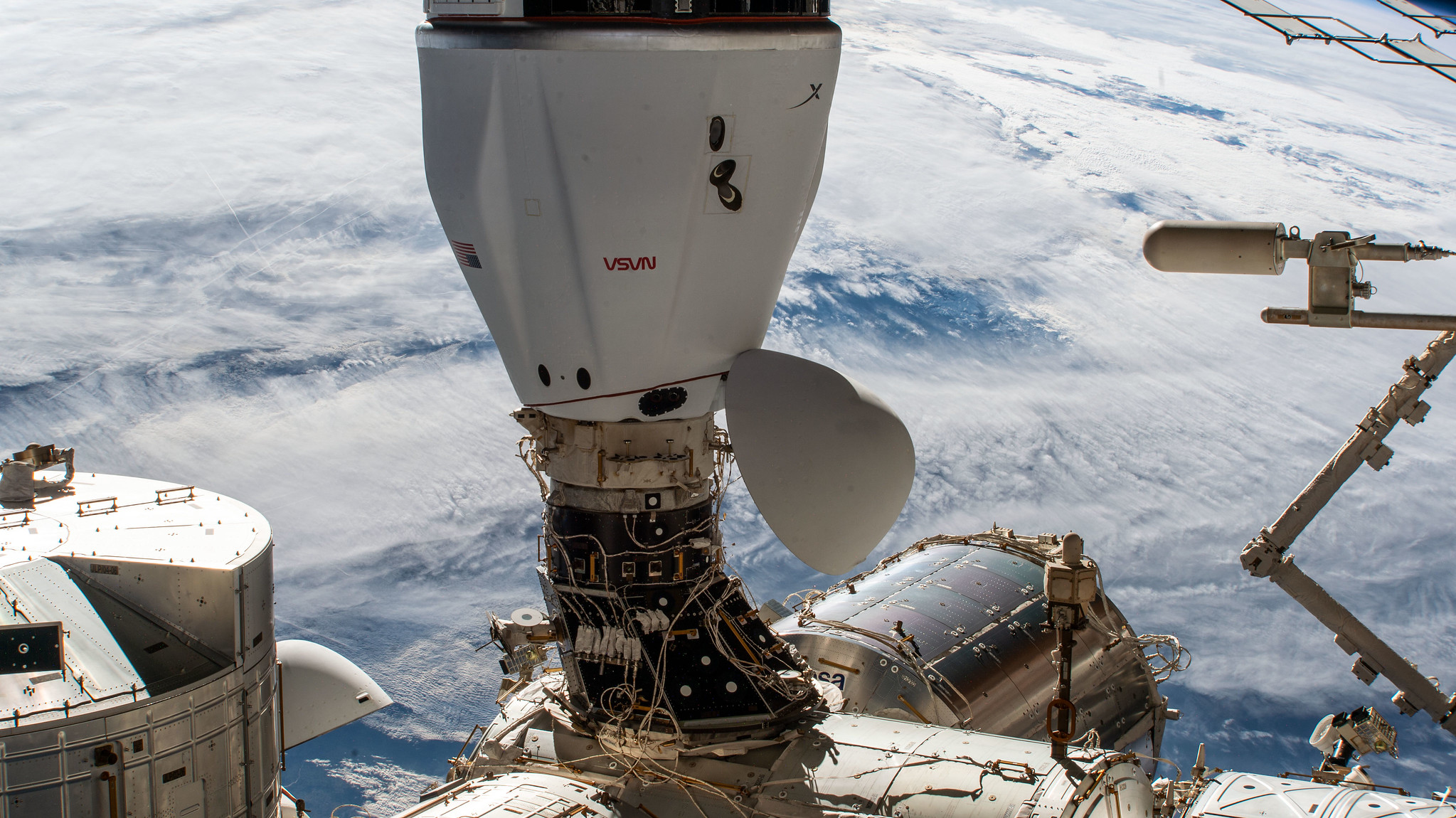
Editor’s note: This advisory was updated again Jan. 22, 2022, after adverse weather conditions at the targeted splashdown caused a postponement of the departure of the SpaceX Cargo Dragon spacecraft to Sunday, Jan. 23.
Editor’s note: This advisory was updated Jan. 20, 2022, with new information after a forecast of inclement weather caused a postponement of the departure of the SpaceX Cargo Dragon spacecraft.
A SpaceX Dragon cargo resupply spacecraft is set to depart the International Space Station on Sunday, Jan. 23. NASA Television, the agency’s website, and the NASA app will provide live broadcast of the spacecraft’s undocking and departure beginning at 10:15 a.m. EST.
Ground controllers at SpaceX in Hawthorne, California, will send commands at 10:40 a.m. for Dragon to undock from the space-facing port of the station’s Harmony module and fire its thrusters to move a safe distance away from the station. Controllers will command a deorbit burn the following day.
After re-entering Earth’s atmosphere, the spacecraft will make a parachute-assisted splashdown off the coast of Florida. NASA TV will not broadcast the splashdown, and updates will be posted on the agency’s space station blog.
Dragon will carry back to Earth more than 4,900 pounds of supplies and valuable scientific experiments that were designed to take advantage of the space station’s microgravity environment. Splashing down off the coast of Florida enables quick transportation of the experiments to NASA’s Space Station Processing Facility at the agency’s Kennedy Space Center in Florida, allowing researchers to collect data with minimal sample exposure to Earth’s gravity.
Some of the scientific investigations that Dragon will return to Earth include:
- Last light: A state-of-the-art light imaging microscope, the Light Microscopy Module (LMM) will return after about 12 years on the station. LMM, sponsored by NASA’s Division of Biological and Physical Sciences, made it possible to observe and record the way matter is organized and moves on the microscopic level, and supported ground-breaking colloid research, plant studies, and thermophysics experiments.
- Tiny structures, assemble: The InSPACE-4 physics study is returning samples that could provide insight into how to harness nanoparticles to fabricate and manufacture new materials, including medical diagnostics and thermal shields for Earth and space applications.
- Cell signaling in microgravity: The ESA (European Space Agency) investigation Cytoskeleton contributes to understanding of how the human body responds to microgravity. The study could support development of countermeasures to help astronaut crew members maintain optimum health on future space missions.
SpaceX’s 24th Commercial Resupply Services mission delivered more than 6,500 pounds of research investigations, crew supplies, and vehicle hardware after launching Dec. 21 on a SpaceX Falcon 9 rocket from Launch Complex 39A at Kennedy.
Learn more about SpaceX missions for NASA at:
-end-
Monica Witt
Headquarters, Washington
202-358-1100
monica.j.witt@nasa.gov
Dylan Connell
Johnson Space Center, Houston
281-483-5111
dylan.b.connell@nasa.gov
Monica Witt
Headquarters, Washington
202-358-1100
monica.j.witt@nasa.gov
Dylan Connell
Johnson Space Center, Houston
281-483-5111
dylan.b.connell@nasa.gov

























